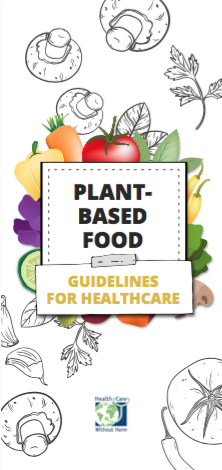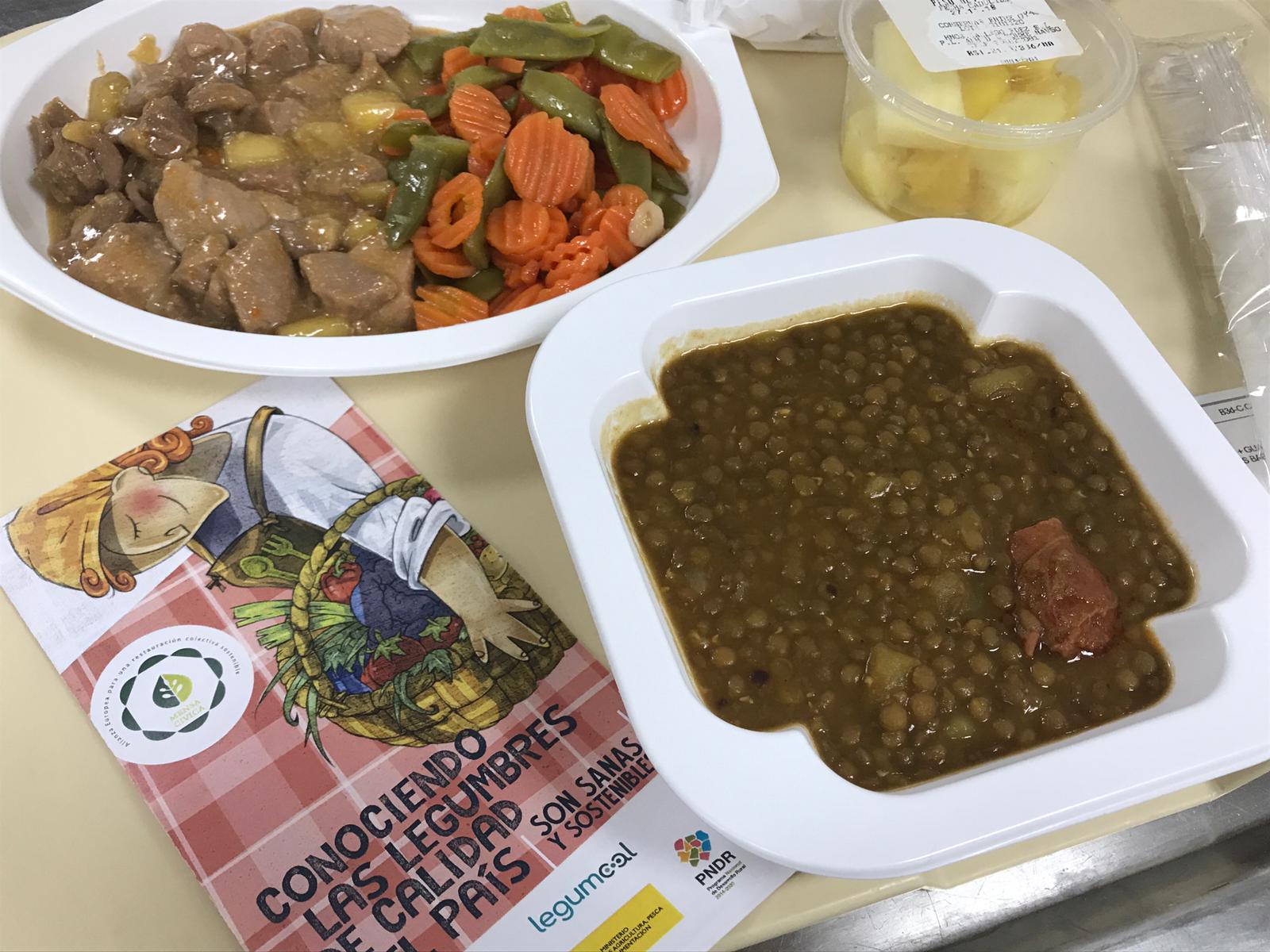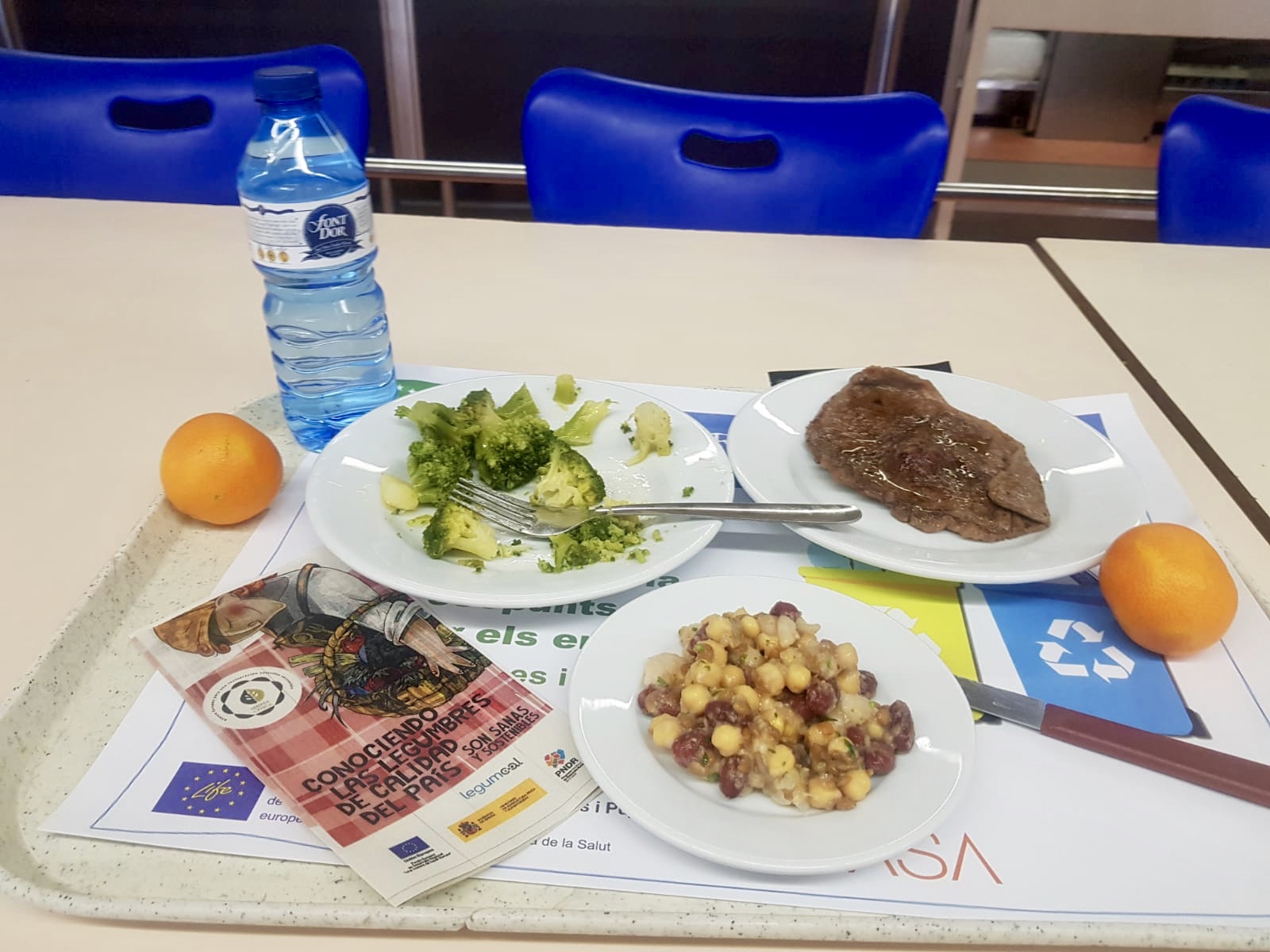Make pulses part of your diet
Blog by Paola Hernandez Olivan, Food Projects and Policy Officer

In Spanish, we have a saying: “They are lentils, take them or leave them” - usually we take them.
The IPCC Report on Global Warming of 1.5ºC highlights the need to shift consumer demand towards healthier diets - particularly for red and processed meats that are associated with health problems such as obesity, diabetes, and high blood pressure. The production of these animal products contributes to climate change and environmental degradation, such as habitat loss and eutrophication.
Reducing the consumption of animal proteins must therefore be considered one of the most effective measures to minimise food’s environmental impacts, whilst also supporting economic growth and public health. Whilst meat consumption can be an emotive topic and a difficult dietary behaviour to change, this trend is gaining momentum. Recently in Europe, both Portugal and France have approved laws mandating public canteens to offer at least one vegetarian meal per week. Vegetarian meals are supposed to be easily implemented, as meat is only a constituent part of dishes. Producers, businesses, civil society and governments can work together to encourage sustainable food production and consumption, and progress on the complex issue of changing consumer behaviour.
Reducing the consumption of animal proteins must therefore be considered one of the most effective measures to minimise food’s environmental impacts, whilst also supporting economic growth and public health.
Whilst new technologies that can produce plant proteins resembling meat or grow meat directly from plant-based protein are getting a lot of attention; innovation should be seen as just one part of the answer. Personally I would prefer to advocate for higher consumption of vegetables, fruits, and pulses in place of animal products. Public institutions, such as schools, universities, or healthcare facilities, can both promote more plant-based diets and directly invest in them through their procurement as well as raise public awareness through information and education campaigns, such as the Spanish association Mensa Civica.
Their campaign, Eat pulses: they are healthy and sustainable is aimed at public institutions, and this year they successfully encouraged over 100,000 people to eat more quality pulses such as those with the Protected Designation of Origin (PDO), Protected Geographical Indication (PGI), and organic or mountain farming certifications. Pulses have many environmental benefits – they play a positive role in the nitrogen cycle, they require minimal resources such as water, produce minimal waste, and can grow in arid conditions as well as improve biodiversity.
The nutritional benefits of pulses also include:
- Protein (20-25%) – when digested with cereals such as rice, corn, or wheat, pulses have high levels of amino acids such as methionine and cysteine
- Low fat content (1-2%)
- Fibre (5-15%) - helps maintain blood cholesterol and glucose levels and promotes the proper functioning of the digestive system
- B vitamins – particularly niacin (B3) and folates
- Minerals - iron, phosphorus, magnesium, zinc and calcium, necessary for a good metabolism
 In HCWH Europe’s recent publication Plant-based food guidelines for healthcare, we demonstrate that healthcare facilities, as significant providers of food, are changing the way they think about food. Some facilities in the European healthcare sector are working to increase patients’ consumption of plant-based produce – showing that not only can this reduce costs related to hospital admission and mortality, but also improve communities’ health: increasing life expectancies and quality of life.
In HCWH Europe’s recent publication Plant-based food guidelines for healthcare, we demonstrate that healthcare facilities, as significant providers of food, are changing the way they think about food. Some facilities in the European healthcare sector are working to increase patients’ consumption of plant-based produce – showing that not only can this reduce costs related to hospital admission and mortality, but also improve communities’ health: increasing life expectancies and quality of life.
Five Spanish hospitals have joined the above-mentioned campaign, promoting educational activities that positively impact the health of patients, communities, and the environment.
The Regional University Hospital of Malaga, promotes a diet that combines both plant and animal-based foods, serving dishes with chickpeas and lentils. For them it is important that their menu of 2-3 pulse-based dishes per week is visible to the public and to raise awareness amongst employees on the origin of the food they cook.

[The Regional University Hospital of Malaga. Its pottage of lentils.]
The San Pedro Hospital in Logroño, together with the General Hospital of La Rioja Clinic, and the Albelda Health Center, serve beans and chickpeas with vegetables twice a week. They like to emphasise that pulses are one of the most important legacies of the Mediterranean diet. Ruth Luth de Dicastillo, Bromatologist from San Pedro hospital says:
"Pulses are very interesting foods from the point of view of health, given their nutritional and environmental value. Also, pulses are very-well known and consumed all year round in our region, we have many different varieties and ways of preparing dishes. Pulses are part of our culture."
In May 2018, the group of healthcare facilities also carried out a campaign to inform patients and staff about the importance of pulses in our diet, this included a tasting of the Caparred de Castaasta bean.
The Guadarrama Hospital in Madrid also regularly serves pulses twice a week and they often also serve peas. Even patients with difficulties swallowing (dysphagia) are mostly able to eat crushed pulses.
The Germans Trias i Pujol University Hospital in Badalona, and the University Hospital Complex of Santiago de Compostela also joined the Eat pulses campaign as part of their sustainable food strategy.

 [The Germans Trias i Pujol University Hospital. Distribution of informational brochures of the campaign in its cafeteria.]
[The Germans Trias i Pujol University Hospital. Distribution of informational brochures of the campaign in its cafeteria.]
These small, but significant steps towards the achievement of a sustainable future within the healthcare sector and other public institutions have attracted the attention of diverse policy-makers and media outlets in Spain, and recently the EU released a report outlining a series of policy instruments and proposals that can help highlight the environmental, health and economic potential of plant proteins in the EU.
We are looking forward to seeing what comes next, but it is clear that consuming more plant sources of protein will form a key part of promoting more sustainable diets (within and outside the healthcare sector). Eating more beans, pulses, nuts, and seeds will help to reduce both the environmental and health burdens we are currently facing.
So, are you ready to make pulses part of your diet? I am!
